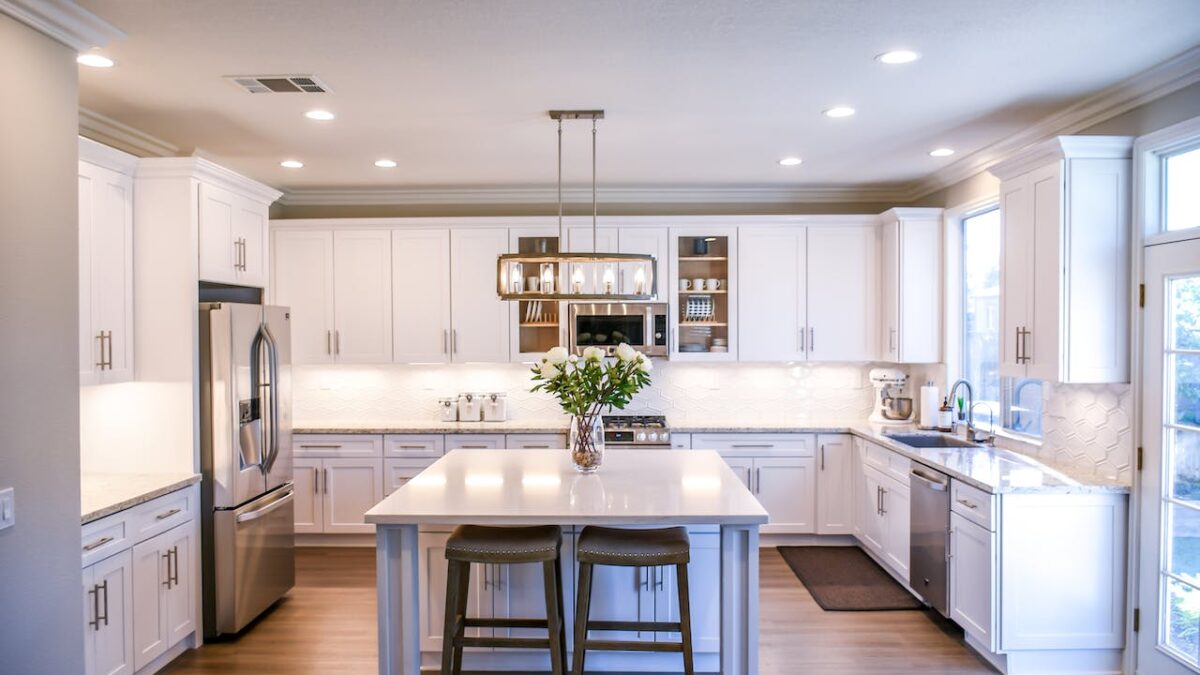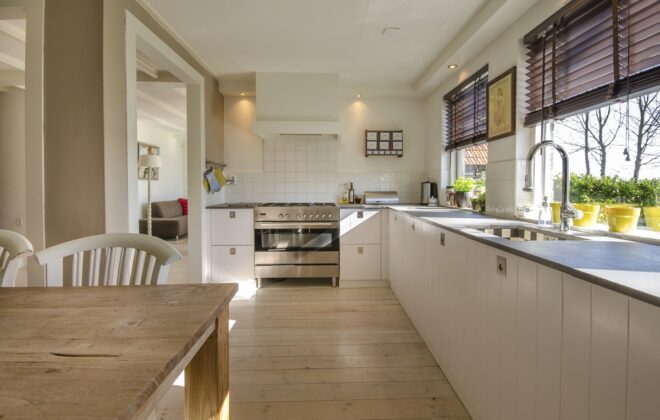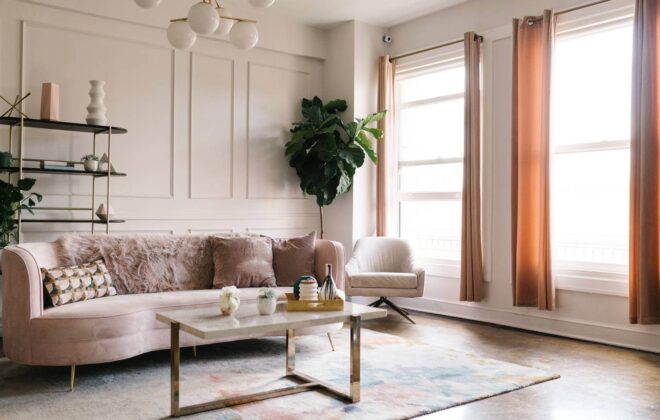Top 10 Frequently Asked Questions About Custom Carpentry Projects
Custom carpentry projects have gained immense popularity in recent years due to their ability to transform living spaces and bring a unique touch to your home or workspace. Whether you’re considering a custom bookshelf, a kitchen renovation, or a piece of custom furniture, embarking on a carpentry project can be an exciting and rewarding experience. To help you gain a more comprehensive understanding of custom carpentry, we’ve expanded on the top 10 frequently asked questions about these projects.

1. What Is Custom Carpentry?
Custom carpentry, at its core, is all about creating bespoke wooden structures, furniture, or fixtures designed to cater to the unique needs and preferences of the client. Unlike mass-produced items, custom carpentry projects are meticulously crafted to fit seamlessly into your space, enhancing its aesthetics and functionality while reflecting your personal style.
2. Why Choose Custom Carpentry Over Pre-Made Furniture?
Opting for custom carpentry over pre-made furniture provides several compelling reasons. Firstly, custom carpentry projects are characterized by their meticulous attention to detail, resulting in superior quality and durability. You have the freedom to choose the wood, finish, and design, ensuring that the final product aligns perfectly with your vision. Custom carpentry also allows you to maximize your available space, as each piece can be tailored to fit the specific dimensions of your room.
3. How Do I Select the Right Custom Carpenter?
Choosing the right carpenter is a critical step in the success of your project. Begin by gathering recommendations from friends, family, or by checking online reviews. Look for carpenters with a portfolio of work that aligns with your style and project objectives. Arrange interviews with potential carpenters to discuss your project, ask pertinent questions, and evaluate their level of expertise. It’s imperative to select a carpenter who possesses both the skills and the creative vision to bring your project to life.
4. What Types of Custom Carpentry Projects Can I Consider?
Custom carpentry offers a wide array of possibilities limited only by your imagination. Some common projects include custom furniture (such as unique tables, chairs, and cabinets), built-in shelving to add style and functionality to your home or office, custom kitchen cabinets designed for optimal storage and aesthetics, wardrobes and closets customized to fit your space, one-of-a-kind doors and windows to create eye-catching entryways, and ornamental moldings and trim to enhance your space with decorative woodwork. Your choice of project should reflect your specific needs, personal style, and desired functionality.
You’re welcome to explore the custom carpentry projects we’ve completed in the past. This can serve as a source of inspiration for your own potential carpentry project.
5. How Do I Determine the Cost of a Custom Carpentry Project?
The cost of a custom carpentry project can vary significantly based on factors like the complexity of the design, the type of wood used, the size of the project, and the labor required. It’s crucial to establish a budget and discuss it with the best carpenters in your area. They can provide you with an estimate based on your project specifications and the materials needed. Be prepared for potential additional costs that may arise due to unforeseen issues or design changes during the project.
6. What Wood Options Are Available for Custom Carpentry?
Custom carpentry projects offer a wide range of possibilities when it comes to selecting the type of wood to use. The choice of wood is a crucial decision in any carpentry project, as it not only impacts the aesthetics but also affects the durability, cost, and overall performance of the final product. Here’s an elaboration on some of the wood options available for custom carpentry:
Oak
Characteristics: Oak is a hardwood known for its exceptional strength and durability. It has a prominent grain pattern and is available in both red and white oak varieties.
Common Uses: Oak is often used in furniture and cabinet construction due to its robustness. It can be stained to reveal its natural grain or painted for a more contemporary look.
Maple
Characteristics: Maple wood is characterized by a fine, even grain and a pale color. It has a smooth and uniform texture, making it ideal for various finishes.
Common Uses: Maple is a popular choice for cabinetry, millwork, and furniture making. It’s a versatile wood that can be used for both traditional and modern designs.
Cherry
Characteristics: Cherry wood boasts a rich, reddish-brown color that darkens over time. It has a fine grain pattern and a smooth finish.
Common Uses: Cherry is often selected for creating elegant and timeless pieces of furniture and cabinetry. Its deep color and natural luster add a touch of sophistication to any project.
Walnut
Characteristics: Walnut is recognized for its dark color, often with a striking grain pattern. It has a smooth finish and a rich, luxurious appearance.
Common Uses: Walnut is a favorite choice for high-end and designer furniture. Its aesthetic qualities and strength make it suitable for pieces that require a premium touch.
Pine
Characteristics: Pine is a softwood with a lighter color and a more pronounced grain pattern. It may contain knots and imperfections that add rustic charm.
Common Uses: Pine is a budget-friendly option and is often chosen for painted projects or those that aim for a more rustic or country-style look. It’s commonly used in home construction and for creating basic furniture.
When selecting the right wood type for your custom carpentry project, it’s essential to consider several factors:
- Project Design: The design and style of your project will greatly influence your wood choice. Some woods are better suited for traditional, while others work well in modern or rustic designs.
- Intended Use: Consider the purpose of the finished product. Some woods are better for heavy-use items like tables and countertops, while others are more suitable for decorative pieces.
- Budget: Different wood types vary in cost. Hardwoods like walnut and cherry tend to be more expensive than softwoods like pine.
- Maintenance: Think about the level of maintenance you’re willing to commit to, as some woods require more care and upkeep to maintain their appearance.
Your carpenter or woodworker can be an invaluable resource when making this decision, as they can provide guidance based on their experience and the specific requirements of your project. Ultimately, the right wood choice will help ensure your custom carpentry project is not only functional but also aesthetically pleasing and long-lasting.
7. How Long Does a Custom Carpentry Project Take to Complete?
The duration of a custom carpentry project can vary widely. Simple projects, like a custom coffee table, may take just a few weeks, whereas more complex projects, such as kitchen cabinetry, could take several months. The timeline is influenced by factors like the project’s scope, the carpenter’s availability, and any unexpected delays. To ensure a realistic timeline, discuss project milestones and deadlines with your carpenter during the planning phase.
8. Do I Need Permits for Custom Carpentry Projects?
The need for permits is contingent on the scope and nature of your project, as well as local regulations. Generally, smaller projects like custom furniture or built-in shelving may not necessitate permits. However, larger projects involving structural changes or electrical work, such as kitchen renovations, might require permits. It’s essential to consult with local authorities and work closely with your carpenter to ensure compliance with all necessary regulations.
9. Can I Make Design Changes During the Project?
Flexibility is a significant advantage of custom carpentry. Most carpenters are open to accommodating design changes during the project, but it’s important to communicate any alterations as early as possible. Keep in mind that changes may affect the project’s timeline and cost, so be prepared for adjustments in these areas. A clear and open line of communication with your carpenter throughout the project is vital to ensure that your vision is brought to life.
10. How Do I Maintain and Care for Custom Carpentry?
Proper maintenance is crucial to preserve the longevity and beauty of your custom carpentry project. Here are some general maintenance tips:
Cleaning
Regularly dust and clean wooden surfaces with a soft, damp cloth to prevent the buildup of dirt and grime.
Protection
Use coasters, placemats, and tablecloths to safeguard wood surfaces from moisture, heat, and scratches.
Refinishing
Over time, wood may show signs of wear. Consult your carpenter for advice on refinishing or repairing the piece to maintain its appearance and functionality.
Humidity Control
Maintain consistent humidity levels in your home to prevent wood from expanding or contracting, which can cause damage over time.
Conclusion
In conclusion, custom carpentry projects offer a world of possibilities to transform your living spaces. By selecting the right carpenter, communicating effectively, and understanding the process, you can turn your ideas into beautifully crafted, functional pieces that enhance your home’s aesthetics and functionality. Whether you’re looking to create custom furniture, built-in shelving, or a complete kitchen renovation, custom carpentry allows you to bring your unique vision to life. Don’t hesitate to embark on your custom carpentry journey and enjoy the satisfaction of owning a one-of-a-kind piece of craftsmanship. The possibilities are endless, and the results are sure to exceed your expectations.
Related Posts
Leave a Reply Cancel reply
Recent Posts
- 7 Essential Staircase Design Tips for a Perfectly Crafted Staircase
- 8 Seasonal Home Maintenance Tips to Protect and Upgrade Your Home
- 5 Smart Space-Saving Carpentry Ideas That Transform Tight Spaces
- 5 Brilliant Tips for Designing Custom Banquettes That Blend Style and Function
- 5 Reasons Finish Carpentry Prep Caulking and Sanding Make or Break the Final Result
Recent Comments
Archives
- May 2025
- April 2025
- March 2025
- February 2025
- October 2024
- September 2024
- August 2024
- July 2024
- June 2024
- May 2024
- April 2024
- March 2024
- February 2024
- January 2024
- December 2023
- November 2023
- October 2023
- September 2023
- August 2023
- July 2023
- June 2023
- May 2023
- April 2023
- March 2023
- February 2023
- January 2023
Categories
- Carpentry DIY Tutorials
- Carpentry for Home Improvement
- Carpentry Q&A
- Carpentry Safety and Best Practices
- Carpentry Trends
- Custom Carpentry
- Design Inspiration
- Finish Carpentry
- Smart-Saving Carpentry
- Staircase Design Tips
- Tool Reviews and Recommendations
- Uncategorized
- Wood Selection and Finishing
- Woodworking Techniques
Categories
- Carpentry DIY Tutorials (5)
- Carpentry for Home Improvement (27)
- Carpentry Q&A (10)
- Carpentry Safety and Best Practices (6)
- Carpentry Trends (12)
- Custom Carpentry (27)
- Design Inspiration (15)
- Finish Carpentry (12)
- Smart-Saving Carpentry (1)
- Staircase Design Tips (1)
- Tool Reviews and Recommendations (2)
- Uncategorized (38)
- Wood Selection and Finishing (1)
- Woodworking Techniques (6)





